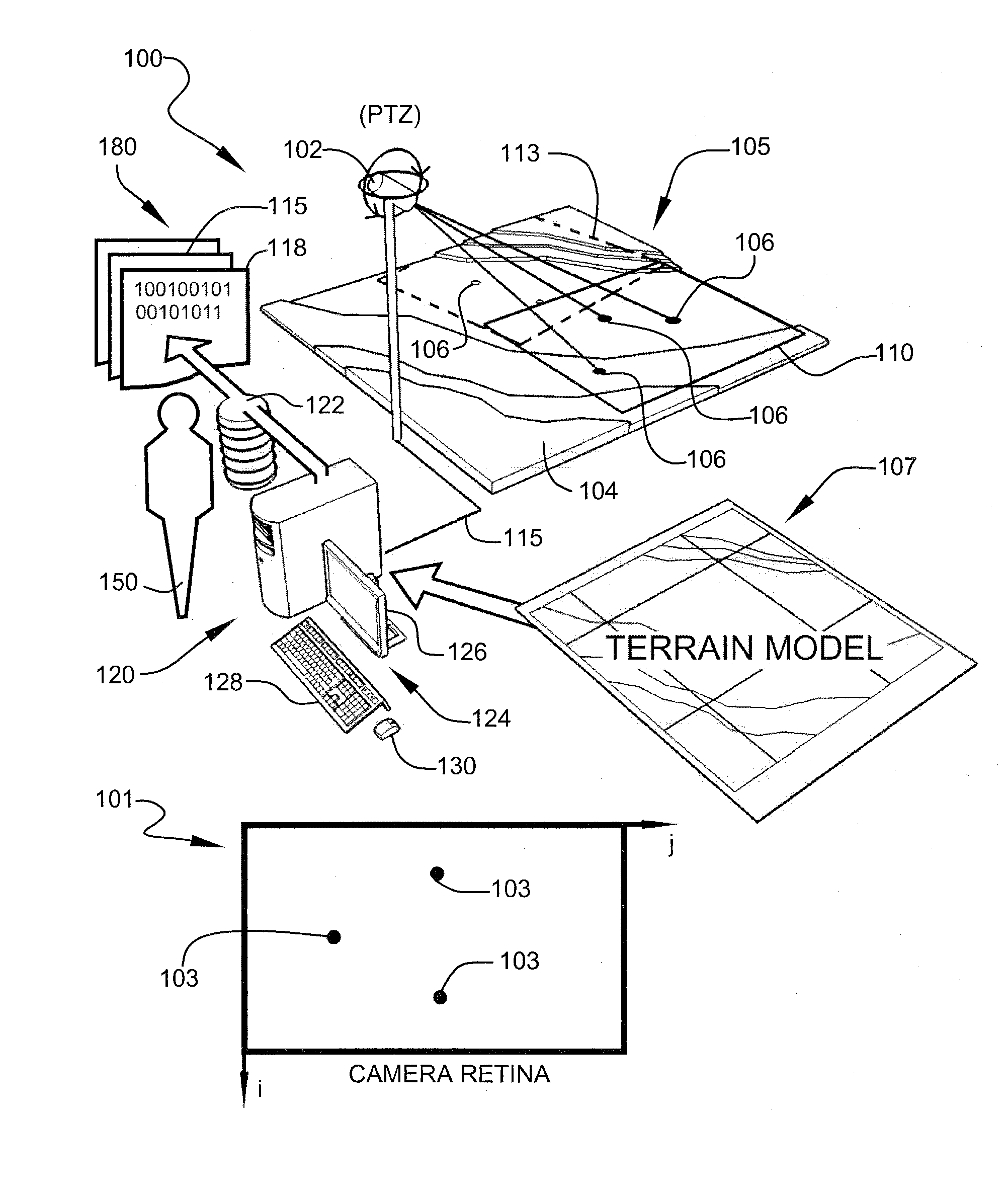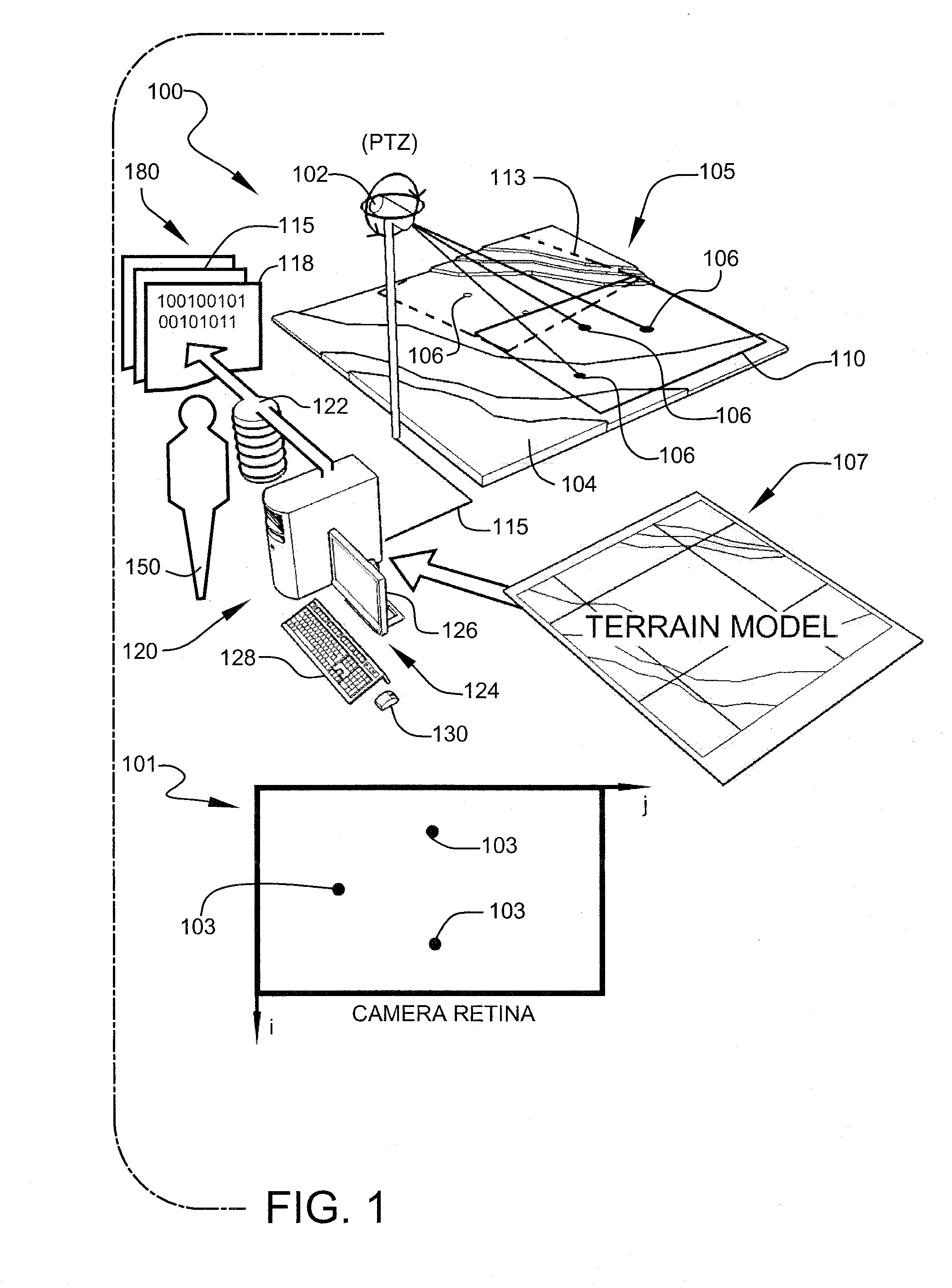Camera image georeferencing systems
a georeferencing system and camera technology, applied in the field of camera image georeferencing systems, can solve the problems of inability to introduce synthetic landmarks into the scene, inability to reduce and inability to achieve the effect of reducing the number of off-line processing requirements and improving the quality of encompassing triangular elements resulting from at least one triangular mesh generation operation
- Summary
- Abstract
- Description
- Claims
- Application Information
AI Technical Summary
Benefits of technology
Problems solved by technology
Method used
Image
Examples
Embodiment Construction
[0035]FIG. 1 shows a high-level schematic diagram illustrating a typical configuration for implementing georeferencing system 100, according to a preferred embodiment of the present invention. Preferred embodiments of georeferencing system 100 preferably enable construction of at least one camera model 180, through a preferred calibration process, and deployment of resulting models for georeferencing targets located in camera space 101. Camera space, as intended in this disclosure, is a two-dimensional abstraction of the physical terrain as imaged by the “retina” of camera 102, and in this disclosure comprises a left-handed coordinate system with its origin at the top left-hand corner of the image. It is noted that camera space, image space, pixel space, and retina space are used interchangeably throughout this disclosure. Conversely, the term objects space, as used herein, describes a frame of reference associated with the physical world. Object space, terrain space, geospatial spa...
PUM
 Login to View More
Login to View More Abstract
Description
Claims
Application Information
 Login to View More
Login to View More - R&D
- Intellectual Property
- Life Sciences
- Materials
- Tech Scout
- Unparalleled Data Quality
- Higher Quality Content
- 60% Fewer Hallucinations
Browse by: Latest US Patents, China's latest patents, Technical Efficacy Thesaurus, Application Domain, Technology Topic, Popular Technical Reports.
© 2025 PatSnap. All rights reserved.Legal|Privacy policy|Modern Slavery Act Transparency Statement|Sitemap|About US| Contact US: help@patsnap.com



